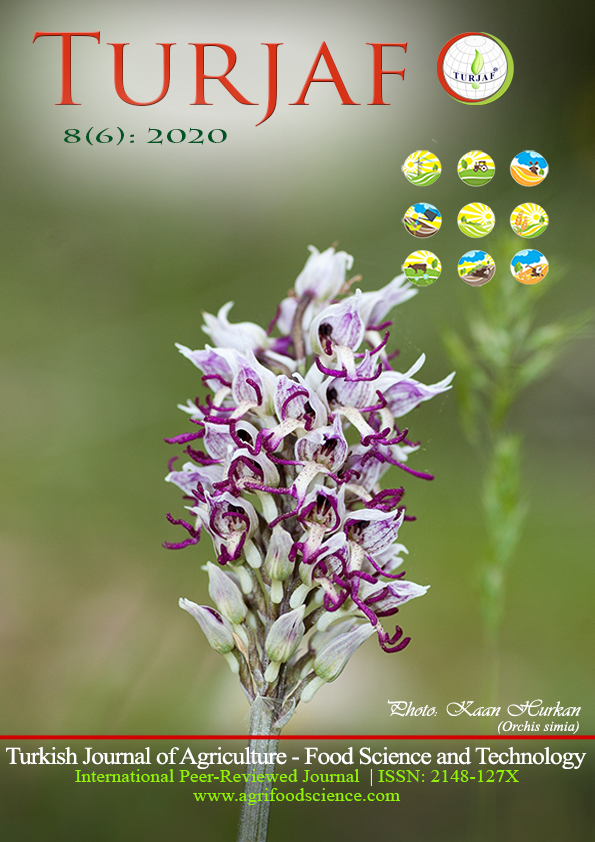Oxidative stability of soybean oil enriched with ethyl acetate extract of olive by-products
DOI:
https://doi.org/10.24925/turjaf.v8i6.1373-1379.3382Keywords:
Olive mill waste water, olive pomace, ethyl acetate extracts, antioxidant activity, soybean oilAbstract
In this study, oxidative stability of soybean oil (SBO) enriched with ethyl ecetate extracts of olive by-products was investigated. Total phenolic contents, phenolic profiles and antioxidant activities of olive wastewater (OMWW) and olive pomace (OP) extracts were also determined. Total phenolic contents of extracts obtained from OMWW and OP were 134.45 and 281.43 mg gallic acid equivalent (GAE)/g extract, respectively. While antioxidant activities of OMWW extracts in the linoleic acid emulsion were in the range of 85.79 % and 88.54 %, OP extracts had 83.30 % and 90.09 % at different concentrations (0.5, 1, 2 ve 3 mg/mL) after incubation at 37 °C. β-carotene bleaching activities of the extracts at 50 °C were found as 26.80-66.63% in OMWW extracts and 18.76-53.32% in OP extracts, respectively. 2,2′-diphenyl-1-picrylhydrazyl (DPPH) radical scavenging activities of OP extracts were higher than those of OMWW extracts and ranged from 30.6% to 87.7% in OP extracts and 16.6% to 54.1% in OMWW extracts at these concentrations. Both the antioxidant and antiradical activities of extracts significantly increased with increased concentration (p<0.05). K232 values of SBO containing ethyl acetate extracts were lower than control during the oxidation test at 60 oC. OP extracts were more effective than OMWW extracts at 1 mg/g. Results showed that ethyl acetate extracts of olive wastes can be used as a source of antioxidants for the stabilization of SBO.Downloads
Published
26.06.2020
How to Cite
Turan, S., & Köroğlu, D. G. (2020). Oxidative stability of soybean oil enriched with ethyl acetate extract of olive by-products. Turkish Journal of Agriculture - Food Science and Technology, 8(6), 1373–1379. https://doi.org/10.24925/turjaf.v8i6.1373-1379.3382
Issue
Section
Research Paper
License
This work is licensed under a Creative Commons Attribution-NonCommercial 4.0 International License.









